Reminiscing
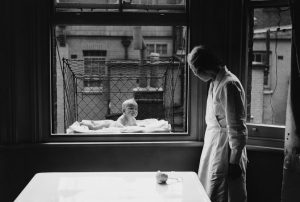 For a long time, people in the 19th century, living in urban apartments, didn’t regularly take their children outside so they could get some fresh air. Then, the doctors started to recommend that these children really needed to get outside for fresh air. Now that doesn’t necessarily mean that the parents were real excited about the idea of loading up their child and taking them for a walk…just to get the recommended amount of fresh air. Nevertheless, it was important, as the doctors told them that it would strengthen their immune system, and with the number of pandemics that had gone around, the parents really tried to do whatever they could to make this happen.
For a long time, people in the 19th century, living in urban apartments, didn’t regularly take their children outside so they could get some fresh air. Then, the doctors started to recommend that these children really needed to get outside for fresh air. Now that doesn’t necessarily mean that the parents were real excited about the idea of loading up their child and taking them for a walk…just to get the recommended amount of fresh air. Nevertheless, it was important, as the doctors told them that it would strengthen their immune system, and with the number of pandemics that had gone around, the parents really tried to do whatever they could to make this happen.
While physicians such as Dr. Luther Emmett Holt advised simply placing an infant’s basket near an open window, some parents took it a step further. Enter the Baby Cage. The baby cage was just what it sounded like. It was a platform, with chicken wire all around it to keep the baby in. This whole contraption was then suspended outside the window…even if the window was on the sixth floor or something. 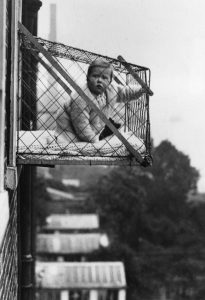 Personally, I can’t imagine hanging my baby outside my window for a dose of fresh air, but it was an actual thing in those days.
Personally, I can’t imagine hanging my baby outside my window for a dose of fresh air, but it was an actual thing in those days.
Eleanor Roosevelt, who by her own admission “knew absolutely nothing about handling or feeding a baby,” bought a chicken-wire cage after the birth of her daughter, Anna. She hung it out the window of her New York City apartment and placed Anna inside for her naps…until a concerned neighbor threatened to report her to the authorities. I would think so. If the brackets that suspended the cage to the window came loose…so long baby. I couldn’t find any incidence of such a thing happening, however. The first commercial patent for a baby cage was filed in 1922 by Emma Read of Spokane, Washington. The cages became popular in London in the 1930s among apartment dwellers without access to backyards. Ultimately, their popularity declined. It is possible that this was connected to safety concerns. As I said, I can imagine. I would have nightmares about that if it were my child.
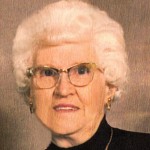 There is a strange phenomenon that occurs sometimes, after someone we love passes away. I’m not talking about seeing their ghost, because I don’t believe in ghosts. Besides, the people I have seen, since the passing of loved ones, are real. I have noticed this after the passing of several people, and in some ways it is odd, but in other ways it is comforting, because it shows me that the person I love is still living in my memory files. In reality, I suppose it’s just me, finding characteristics in people around me that remind me of a lost loved one.
There is a strange phenomenon that occurs sometimes, after someone we love passes away. I’m not talking about seeing their ghost, because I don’t believe in ghosts. Besides, the people I have seen, since the passing of loved ones, are real. I have noticed this after the passing of several people, and in some ways it is odd, but in other ways it is comforting, because it shows me that the person I love is still living in my memory files. In reality, I suppose it’s just me, finding characteristics in people around me that remind me of a lost loved one.
After my great aunt, Gladys Pattan Byer Cooper was killed in a plane crash, I used to see an older woman at the mall, just about every weekend. She reminded me so much of Aunt Gladys that I could almost imagine it was really her. Of course, the woman didn’t look exactly like Aunt Gladys, but she looked enough like her to bring back memories of years gone by, and a little sadness at the way she had passed. It seemed so senseless, so unbelievable that it could have happened in such a manner. One minute Aunt Gladys was fine and taking a trip to a family reunion, and the next, her life was over.
I find it strange that this phenomenon doesn’t seem to happen all the time. It only seems to happen in deaths that don’t make sense to me. I’m not looking for people who remind me of the person who died unexpectedly, they just suddenly appear. As I said, they are real people, please understand that. They just have similar features to my loved one who is gone. It doesn’t scare me, but rather it is just a strange reminder that my loved one existed. That their life was important. That their memory is, and always will be with me.

Since my 2nd cousin once removed, Jackie Morton passed away on March 9, 2018, I have thought about her many times. She was such a sweet, loving girl, and her passing simply makes no sense to me. One day she was fine, and the next day she was gone. Then, a few days later, while walking at the mall, I saw someone who really reminded me of Jackie. Had I not known better, I could have really thought it was her…though I knew it was not, for it could not be her. She has gone to Heaven now. Nevertheless, Jackie’s memory, like the memory of her great grandmother, my Great Aunt Gladys will always be with me.
I thought I saw you at the mall today. Though I knew it could not be you at all, for you are gone. I miss you so, and I wish you could still be here on Earth with us. But sadly, that is not to be, and never could be. You will always be with us in our thoughts, and in our memories…and we will always miss you so.
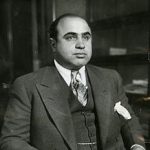
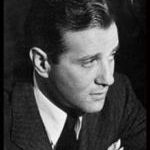 Seldom, if ever, do you see a minor political party that is able to obtain national support for their way of doing things, but that did happen in the 1920s. The Prohibition Party (PRO) is a political party in the United States best known for its historic opposition to the sale or consumption of alcoholic beverages. It is the oldest existing third party in the US. The party was an integral part of the temperance movement. I suppose it depends on which side you were on, as to how you feel about alcohol, but the reality is that they most likely didn’t have the support of the majority of the American citizens.
Seldom, if ever, do you see a minor political party that is able to obtain national support for their way of doing things, but that did happen in the 1920s. The Prohibition Party (PRO) is a political party in the United States best known for its historic opposition to the sale or consumption of alcoholic beverages. It is the oldest existing third party in the US. The party was an integral part of the temperance movement. I suppose it depends on which side you were on, as to how you feel about alcohol, but the reality is that they most likely didn’t have the support of the majority of the American citizens.
Nevertheless, on Saturday, January 7, 1920, the Manchester Guardian reported with a level of mild shock on one of the most extraordinary experiments in modern democratic history. “One minute after midnight tonight,” the story began, “America will become an entirely arid desert as far as alcoholics are concerned, any drinkable containing more than half of 1 per cent alcohol being forbidden.” In fact, the Volstead Act, which prohibited the sale of “intoxicating liquors,” had come into operation at midnight the day before. But the authorities had granted drinkers one last day, one last session at the bar, before the iron shutters of Prohibition came down.
I don’t really know how I feel about the comparison between the prohibition of alcohol, and the war on drugs (specifically Marijuana), but one thing can be said for sure. With the law that made these things illegal, came, by natural progression, the gangs or gangsters, who illegally made a way for those things to be obtained by the people. As to Prohibition, the 20s were filled with bootleggers, gangsters, and illegal purchases of alcohol…hence the Roaring Twenties.
Across the United States, many bars and restaurants marked the demise of the demon drink by handing out free glasses of wine, brandy and whisky. Others saw one last opportunity to make a killing, charging an eye-watering “20 to 30 dollars for a bottle of champagne, or a dollar to two dollars for a drink of whisky”. In some establishments, mournful dirges played while coffins were carried through the crowds of drinkers. In others, the walls were hung with black crepe. And in the most prestigious establishments, the Guardian noted, placards carried the ominous words: “Exit booze. Doors close on Saturday.” It was like an Irish wake for the deceased.
The prohibition of alcohol lasted for almost 14 years, and with it came a violent era in out country’s history. Gangsters like Al Capone, Bugsy Segal, Lucky Luciano, Meyer Lansky, Johnny Torrio, Arnold Rothstein, Bugs Moran, Enoch “Nucky” Johnson, and the mafia sprung into action…refusing to be railroaded. Prohibition’s largely Protestant champions, a large proportion of whom were high-minded, middle-class women. were the do-gooders of the day. Often deeply religious, they saw Prohibition as a kind of social reform, a crusade to clean up the American city and restore the founding virtues of the godly republic. The gangsters, gangs, and the mafia saw it as a declaration of war, and acted accordingly. Stills were built, and bootleggers financed. 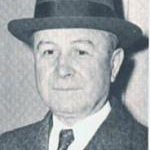
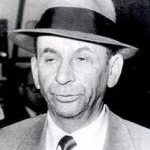 Before long violence broke out as the runners were caught and the gangsters lost their product. Nevertheless, for 14 long years, Prohibition persisted, until there was finally enough pull in Congress. The 21st Amendment to the United States Constitution is ratified on December 5, 1933, repealing the 18th Amendment and bringing an end to the era of national prohibition of alcohol in America. At 5:32pm EST, Utah became the 36th state to ratify the amendment, achieving the requisite three-fourths majority of states’ approval. Pennsylvania and Ohio had ratified it earlier in the day.
Before long violence broke out as the runners were caught and the gangsters lost their product. Nevertheless, for 14 long years, Prohibition persisted, until there was finally enough pull in Congress. The 21st Amendment to the United States Constitution is ratified on December 5, 1933, repealing the 18th Amendment and bringing an end to the era of national prohibition of alcohol in America. At 5:32pm EST, Utah became the 36th state to ratify the amendment, achieving the requisite three-fourths majority of states’ approval. Pennsylvania and Ohio had ratified it earlier in the day.

 The other day I watched a documentary about the Yukon Gold Rush. Each prospector was required by the Canadian authorities, to bring a year’s supply of food in order to prevent starvation. In all, their equipment weighed close to a ton, which for most had to be carried in stages by themselves. Together with mountainous terrain and cold climate, this meant that those who persisted did not arrive until summer 1898. It wasn’t that the border patrol was being difficult, but rather that they knew that if these prospectors were to survive the extreme weather of the Yukon Territory, they were going to need every bit of those supplies, and sometimes more. It is estimated that 100,000 prospectors who headed north to the Yukon Territory between 1897 and 1898. Of those 100,000, it is estimated that 30,000 to 40,000 actually arrived in the gold fields, and of those who actually reached Dawson City during the gold rush, only around 15,000 to 20,000 finally became prospectors. The odd were certainly stacked against them.
The other day I watched a documentary about the Yukon Gold Rush. Each prospector was required by the Canadian authorities, to bring a year’s supply of food in order to prevent starvation. In all, their equipment weighed close to a ton, which for most had to be carried in stages by themselves. Together with mountainous terrain and cold climate, this meant that those who persisted did not arrive until summer 1898. It wasn’t that the border patrol was being difficult, but rather that they knew that if these prospectors were to survive the extreme weather of the Yukon Territory, they were going to need every bit of those supplies, and sometimes more. It is estimated that 100,000 prospectors who headed north to the Yukon Territory between 1897 and 1898. Of those 100,000, it is estimated that 30,000 to 40,000 actually arrived in the gold fields, and of those who actually reached Dawson City during the gold rush, only around 15,000 to 20,000 finally became prospectors. The odd were certainly stacked against them.
On man, in particular, was of interest to me. His name was Albert J Goddard. Goddard was an American politician in the state of Washington. He served in the Washington House of Representatives from 1895 to 1897, but he also made the gold rush run during the stampede years. He had a very unique way of doing this, however. Goddard built a sternwheeler-utility boat, for use in the Yukon gold rush. The boat was named for him…the A. J. Goddard. What really interested me was that Goddard made several trips north with parts for the boat. The border patrol basically looked at him as if he was crazy. His load was extremely heavy, and they were certain that he would not make it. Nevertheless, when he got to the headwater lakes, he proceeded to put together his boat. Many of the people who met there to build their boats, were very inexperienced in boat building, and consequently, many of the boats didn’t fare well. The A. J. Goddard was the exception to the rule. Albert Goddard was the exception. He knew what he was doing, and his ship was a good one for all the years he used it. For Albert, the gold rush was not about prospecting for gold. I don’t know if he instinctively knew 
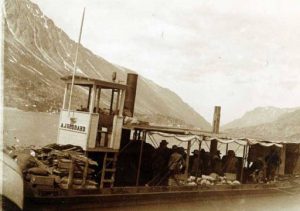 that very few people would be successful or not, but his plan was to be a transport boat to bring other prospectors to the gold fields. The A. J. Goddard made one trip to Dawson during the gold rush, was sold, and sank in a storm on Lake Laberge in 1901. I guess Goddard go out just in time, or maybe the endeavor was just not what he had in mind. The boat was rediscovered largely intact in 2008. On board the boat were artifacts of the period such as a gramophone with ontemporary recordings.
that very few people would be successful or not, but his plan was to be a transport boat to bring other prospectors to the gold fields. The A. J. Goddard made one trip to Dawson during the gold rush, was sold, and sank in a storm on Lake Laberge in 1901. I guess Goddard go out just in time, or maybe the endeavor was just not what he had in mind. The boat was rediscovered largely intact in 2008. On board the boat were artifacts of the period such as a gramophone with ontemporary recordings.
 On Saint Patrick’s Day, my cousin Michael McDaniels and his wife, Deena took his mom, my Aunt Bonnie McDaniels to a celebration in downtown Casper, Wyoming, as part of her birthday celebration. That reminded me about the many times that my husband, Bob Schulenberg and I would run into Aunt Bonnie and her husband, my Uncle Jack at the fair with their grandchildren. They took them every year and the kids had a great time. We would run into them, because we still went to the fair at that time. I always thought it was great that they took their grandkids every year, because lots of kids don’t get to go. Either their parents couldn’t afford it, or just figured the kids could wait until they were old enough to go on their own. Aunt Bonnie and Uncle Jack’s grandkids didn’t have to worry about that, because they got to go every year.
On Saint Patrick’s Day, my cousin Michael McDaniels and his wife, Deena took his mom, my Aunt Bonnie McDaniels to a celebration in downtown Casper, Wyoming, as part of her birthday celebration. That reminded me about the many times that my husband, Bob Schulenberg and I would run into Aunt Bonnie and her husband, my Uncle Jack at the fair with their grandchildren. They took them every year and the kids had a great time. We would run into them, because we still went to the fair at that time. I always thought it was great that they took their grandkids every year, because lots of kids don’t get to go. Either their parents couldn’t afford it, or just figured the kids could wait until they were old enough to go on their own. Aunt Bonnie and Uncle Jack’s grandkids didn’t have to worry about that, because they got to go every year.
Aunt Bonnie also loved attending the various events of her grandchildren, and I’m sure she was that way with her kids too. I usually saw her at the track meets at Grant School, where both of our grandchildren went to elementary school. Of course, Uncle Jack had to work in those days, so he didn’t get the pleasure of coming to the track meets. Aunt Bonnie was always so excited about the events, and spent the day cheering her grandson, Anthony McDaniels on to, hopefully, victory. For Aunt Bonnie, her family was everything. She wanted nothing more than to spend time surrounded by them. They were the product of the great love she had for Uncle Jack, and in them, her life was complete.
Aunt Bonnie has blessed many people in her lifetime. Her cakes have graced many a wedding, but it was her 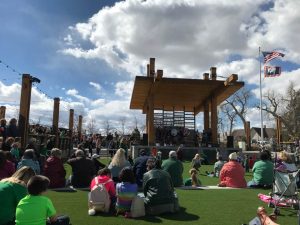 smile and her cheerful way that were the real blessing. Every time Bob and I ran into her, oddly most often while grocery shopping at Walmart, she and Uncle Jack were always pleased to run into us, and we always had a nice conversation…even if it was a short conversation. We just always enjoyed running into them. Things are different for Aunt Bonnie now that Uncle Jack has gone to Heaven, but it pleases me to see her kids taking her out to do the fun stuff. It’s almost like going full circle. What she and Uncle Jack did for their kids, they are now doing for her. And what a special treat it must be for her. She got to go to something she wouldn’t have done on her own. Today is Aunt Bonnie’s birthday. Happy birthday Aunt Bonnie!! Have a great day!! We love you!!
smile and her cheerful way that were the real blessing. Every time Bob and I ran into her, oddly most often while grocery shopping at Walmart, she and Uncle Jack were always pleased to run into us, and we always had a nice conversation…even if it was a short conversation. We just always enjoyed running into them. Things are different for Aunt Bonnie now that Uncle Jack has gone to Heaven, but it pleases me to see her kids taking her out to do the fun stuff. It’s almost like going full circle. What she and Uncle Jack did for their kids, they are now doing for her. And what a special treat it must be for her. She got to go to something she wouldn’t have done on her own. Today is Aunt Bonnie’s birthday. Happy birthday Aunt Bonnie!! Have a great day!! We love you!!
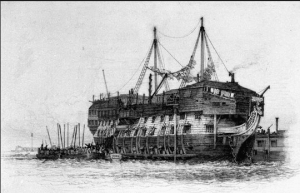 The reasons that Britain decided to start a Penal Colony at Botany Bay, Australia are not fully agreed upon. Some say that that there were deeper motives than just a place to house their criminals. The soil at Botany Bay was perfect for growing flax. I suppose that the prisoners would need to be doing some kind of work as penance for their crimes. Nevertheless, Britain would be making a profit from the flax that was produced thee, and the bay was perfect for a port, which would be necessary to assist with trade. All in all, Botany Bay seemed like the best option for a penal colony for Britain, so the plans were put in place, and before long the penal colony became a reality.
The reasons that Britain decided to start a Penal Colony at Botany Bay, Australia are not fully agreed upon. Some say that that there were deeper motives than just a place to house their criminals. The soil at Botany Bay was perfect for growing flax. I suppose that the prisoners would need to be doing some kind of work as penance for their crimes. Nevertheless, Britain would be making a profit from the flax that was produced thee, and the bay was perfect for a port, which would be necessary to assist with trade. All in all, Botany Bay seemed like the best option for a penal colony for Britain, so the plans were put in place, and before long the penal colony became a reality.
When Governor Phillip arrived in 1788, he asked for carpenters, masons, bricklayers to help set up the colony, along with many tools of the trades. In January of 1788, the first 736 convicts banished from England to Australia arrived in Botany Bay. Over the next 60 years, approximately 50,000 criminals were transported from Great Britain to the Botany Bay in one of the strangest episodes in criminal-justice history. I think many of us have thought that some criminals should be place on a deserted island, but Britain basically did just that…with every criminal, it seems.
The accepted wisdom of the upper and ruling classes in 18th century England was that criminals were inherently defective. They did not believe criminals could be rehabilitated and that they simply required separation from the genetically pure, law-abiding citizens. Consequently, lawbreakers had to be either killed or exiled, because prisons were too expensive, and they criminals were not worth the money. With the American victory in the Revolutionary War, transgressors could no longer be shipped off across the Atlantic, so the English had to look for a colony in some other direction.
Captain Arthur Phillip, a tough but fair career naval officer, was charged with setting up the first penal colony in Australia. The convicts were chained beneath the deck during the entire hellish six-month voyage. The first voyage claimed the lives of nearly 10 percent of the prisoners, which remarkably proved to be a rather good rate. On later trips, up to a third of the unwilling passengers died on the way. These were not hardened criminals by any measure; only a small minority were transported for violent offenses. Among the first group was a 70-year-old woman who had stolen cheese to eat.
Although not confined behind bars, most convicts in Australia had an extremely tough life. The guards who volunteered for duty in Australia seemed to be driven by exceptional sadism. Even small violations of the rules could result in a punishment of 100 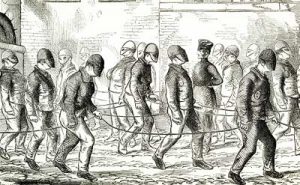 lashes with a whip. It was said that blood was usually drawn after five lashes, but they didn’t stop there. Convicts usually ended up walking home in boots filled with their own blood, if they could walk at all. Convicts who attempted to escape were sent to tiny Norfolk Island, 600 miles east of Australia. The conditions there were even more inhumane. The only hope of escape from the horror of Norfolk Island was a “game” in which groups of three prisoners drew straws. The short straw was killed as painlessly as possible and a judge was then shipped in to put the other two on trial, one playing the role of killer, the other as witness. I guess the only hope of escape was, in reality, death. There were no second chances for them.
lashes with a whip. It was said that blood was usually drawn after five lashes, but they didn’t stop there. Convicts usually ended up walking home in boots filled with their own blood, if they could walk at all. Convicts who attempted to escape were sent to tiny Norfolk Island, 600 miles east of Australia. The conditions there were even more inhumane. The only hope of escape from the horror of Norfolk Island was a “game” in which groups of three prisoners drew straws. The short straw was killed as painlessly as possible and a judge was then shipped in to put the other two on trial, one playing the role of killer, the other as witness. I guess the only hope of escape was, in reality, death. There were no second chances for them.
 Most of us think of Saint Patrick’s day as a day to celebrate being Irish, and to celebrate even if you aren’t Irish. But this day is actually dedicated to a man who was considered legendary by the Irish people. Born in Great Britain, probably in Scotland, to a well-to-do Christian family of Roman citizenship, Patrick was captured and enslaved at age 16 by Irish marauders. For the next six years, he worked as a herder in Ireland, turning to a deepening religious faith for comfort. Following the counsel of a voice he heard in a dream one night, he escaped and found passage on a ship to Britain, where he was eventually reunited with his family.
Most of us think of Saint Patrick’s day as a day to celebrate being Irish, and to celebrate even if you aren’t Irish. But this day is actually dedicated to a man who was considered legendary by the Irish people. Born in Great Britain, probably in Scotland, to a well-to-do Christian family of Roman citizenship, Patrick was captured and enslaved at age 16 by Irish marauders. For the next six years, he worked as a herder in Ireland, turning to a deepening religious faith for comfort. Following the counsel of a voice he heard in a dream one night, he escaped and found passage on a ship to Britain, where he was eventually reunited with his family.
Much of what is known about Patrick’s legendary life comes from a book he wrote during his last years, called the Confessio. According to the Confessio, while in Britain, Patrick had another dream, in which an individual named Victoricus gave him a letter. The letter was entitled “The Voice of the Irish.” As he read it, Patrick seemed to hear the voices of Irishmen pleading him to return to their country and walk among them once more. After studying for the priesthood, Patrick was ordained a bishop. He arrived in Ireland in 433 and began preaching the Gospel, converting many thousands of Irish and building churches around the country. After 40 years of living in poverty, teaching, traveling, and working tirelessly, Patrick died on March 17, 461 in Saul,  where he had built his first church.
where he had built his first church.
Since Patrick’s passing, countless legends have grown up around him. The Irish made him the patron saint of Ireland. They say he baptized hundreds of people on a single day, and that he used a three-leaf clover…the famous shamrock…to describe the Holy Trinity. He is often portrayed in art as trampling on snakes, a picture that came with the belief that he drove those reptiles out of Ireland. For thousands of years, the Irish have observed the day of Saint Patrick’s death as a religious holiday, attending church in the morning and celebrating with food and drink in the afternoon. It was a day to be thankful for the man who bought them to the Lord. As holidays often do, the ways of celebrating changed over the years. The first St. Patrick’s Day parade took place not in Ireland, but the United States, when Irish soldiers serving in the English military marched through New York City in 1762. I’m sure they were doing their best to keep with the tradition of their country. As the years went on, the parades became a show of unity and strength for persecuted Irish-American  immigrants, and then a popular celebration of Irish-American heritage.
immigrants, and then a popular celebration of Irish-American heritage.
The rest of the world observed it differently…probably due to the Irish tourism’s efforts to promote their country. The party went global in 1995, when the Irish government began a large-scale campaign to market Saint Patrick’s Day as a way of driving tourism and showcasing Ireland’s many charms to the rest of the world. Today, March 17 is a day of international celebration, as millions of people around the globe put on their best green clothing to drink beer, watch parades and toast the luck of the Irish, but it was never really about luck, you know…it was about blessing. Happy Saint Patrick’s day…and cheers!!
 When my nephew, Eric Parmely was little, I would never have guessed that he would decide to become a farmer. Eric was born a city boy, and lived in town throughout his childhood. He rode motorcycles, worked on cars with his dad, and did all the typical things at city boys did. Then, when Eric met Ashley, everything changed. Ashley was a country girl, and loved all the farm animals…especially horses, and especially miniature horses. The reality was that Eric was so smitten with Ashley, that wherever Ashley was going, Eric wanted to go…
When my nephew, Eric Parmely was little, I would never have guessed that he would decide to become a farmer. Eric was born a city boy, and lived in town throughout his childhood. He rode motorcycles, worked on cars with his dad, and did all the typical things at city boys did. Then, when Eric met Ashley, everything changed. Ashley was a country girl, and loved all the farm animals…especially horses, and especially miniature horses. The reality was that Eric was so smitten with Ashley, that wherever Ashley was going, Eric wanted to go…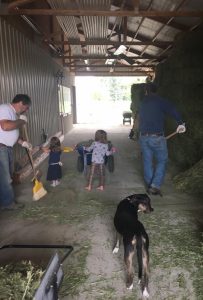 whether he liked country life or not. The strange thing was, that this city boy suddenly found out that he liked country life…he really liked it.
whether he liked country life or not. The strange thing was, that this city boy suddenly found out that he liked country life…he really liked it.
Over the next seven years I watched as Eric became more and more a country boy…well, a country man. He loved having room to spread out and play with his kids, and have as many farm animals as he and Ashley could possible want. They raise goats, cows, guinea pigs, ducks, chickens, horses, dogs, cats…and kids!! Their two daughters, Reagan and Hattie and a great help around the farm, and no job grosses them out. I know their son, Bowen will soon grow up to be a great help too, but for now he gets to go along for the ride. Bowen likes that just as much as the girls like the work, for now.

Eric has worked for Halliburton for some time now, and is often out of town with his job. That is always tough on the family. Kids need both parents to be around, but at least the kids know that their daddy will be home soon. Eric is a hard worker, and when the bottom dropped out of the oil industry, Eric was able to keep his job. That is important, because he has a family to support. We are all very glad that his job was saved, but sorry that his work is so far away. We are also hoping that very soon, Eric’s job will bring him back home to work. Today is Eric’s birthday. Happy birthday Eric!! Have a great day!! We love you!!
 My niece, Kellie Hadlock was practically born laughing, or to be more correct, giggling…and she hasn’t stopped since. Kellie was always happy, and simply couldn’t ever imagine going through life any other way. She loves a good joke, and sees humor in just about every situation. She can’t imagine going through her life without daily laughter, and we can’t imagine it either, because Kellie wouldn’t be Kellie without her giggles. They make her who she is.
My niece, Kellie Hadlock was practically born laughing, or to be more correct, giggling…and she hasn’t stopped since. Kellie was always happy, and simply couldn’t ever imagine going through life any other way. She loves a good joke, and sees humor in just about every situation. She can’t imagine going through her life without daily laughter, and we can’t imagine it either, because Kellie wouldn’t be Kellie without her giggles. They make her who she is.
Kellie became a successful insurance agent a few years ago, and was then given the opportunity to work in the insurance department of a title agency, which she has found to be very much to her liking. She has become a great asset to American Title Agency, where she now works, and her whole family is very happy for her. While insurance at a title agency is Kellie’s career, it is no her life. Her life belongs to God and praising Him in song.

Kellie is one of the lead singers at our church, Word Christian Fellowship. Kellie has a beautiful voice, and when it is paired with her love of the Lord, the songs take on an air of the angelic. That’s Kellie’s voice…just beautiful!! Of course, Kellie’s beautiful voice comes from her beautiful spirit. I have continued to be so proud of how she has grown in her music ministry. She wanted to go into music ministry on a full time basis, but God has not moved her in that direction at this time. I think it is likely because she would probably have to travel to do that full-time, and while that would be fun for a time, Kellie is very much a family person, and I don’t know how she would do with that in the long term.
Kellie loves being an aunt to her nephew, Ethan Hadlock and  nieces, Aurora Hadlock, Adelaide Sawdon, and Mackenzie Moore, and it would be very hard to be far away from them all the time. She already has to be far away form Mackenzie, who lives in North Carolina, and that is really hard for the whole family. So it would be really hard to live far away form all of them. Kellie is also very close with her mom and dad, Allyn and Chris Hadlock, and loves spending time with them, especially at their place on Casper Mountain. In fact, I thing that is where she uses up many of her awesome giggles. The family loves to get together and laugh, sing, and just enjoy each others company. It’s a great life. Today is Kellie’s birthday. Happy birthday Kellie!! Have a great day!! We love you!!
nieces, Aurora Hadlock, Adelaide Sawdon, and Mackenzie Moore, and it would be very hard to be far away from them all the time. She already has to be far away form Mackenzie, who lives in North Carolina, and that is really hard for the whole family. So it would be really hard to live far away form all of them. Kellie is also very close with her mom and dad, Allyn and Chris Hadlock, and loves spending time with them, especially at their place on Casper Mountain. In fact, I thing that is where she uses up many of her awesome giggles. The family loves to get together and laugh, sing, and just enjoy each others company. It’s a great life. Today is Kellie’s birthday. Happy birthday Kellie!! Have a great day!! We love you!!
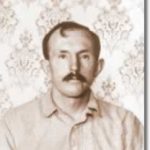 The old West as a wild place with very little law enforcement, and there was a lot of distance between lawmen. That also left room for may forms of lawlessness. I can’t say for sure that the gun for hire started in the old West, but it seems plausible. One such “gun for hire” was Thomas “Tom” Horn Jr, who often used the alias of James Hicks. Horn was born in Memphis, Missouri on November 21, 1860. He would become one of the most celebrated hired guns of the Old West, winning national fame for his freelance work, due in large part to his autobiography. Nevertheless, he wound up on the gallows for practicing his trade.
The old West as a wild place with very little law enforcement, and there was a lot of distance between lawmen. That also left room for may forms of lawlessness. I can’t say for sure that the gun for hire started in the old West, but it seems plausible. One such “gun for hire” was Thomas “Tom” Horn Jr, who often used the alias of James Hicks. Horn was born in Memphis, Missouri on November 21, 1860. He would become one of the most celebrated hired guns of the Old West, winning national fame for his freelance work, due in large part to his autobiography. Nevertheless, he wound up on the gallows for practicing his trade.
Tom was the fifth of 12 children, and his father, Tom Horn Sr, was a strict disciplinarian. Apparently, Tom didn’t like his dad’s strict ways, so he ran away in 1874 at the age of 14. Horn headed west…first to Santa Fe, then on to Arizona. By the time he was 15, he was an army scout and involved in many campaigns for more than a decade, including Geronimo’s surrender in 1886, in which Horn said he played a major role. During that time he also learned Spanish. As to his own account, Horn writing that he played a big role in the surrender of Geronimo, many historians doubt that, and actual accounts of that day indicate that Tom was there solely as a Spanish to English interpreter. After the surrender of Geronimo, Horn was discharged as a scout and reportedly mined for a while in Aravaipa, Arizona. Other than his autobiography, little is known about this period of his life for sure. We know that he was involved somehow with the Pleasant Valley War between Arizona cattlemen and sheepmen, but for which side is not clear.
It was during this time he decided to give law enforcement a try. In 1890, after proving himself during a short stint as a deputy sheriff in Arizona, Horn joined the Pinkerton Agency as a roving gunman, and using his gun with lethal effectiveness, tracked down dozens of outlaws, reputedly killing 17 men. He was pressured to resign by the agency, even though he was respected as a tracker. It seemed that with Horn came bad publicity. Horn decided to go it alone as a cattle detective, turning up in Wyoming in 1894 working for the beef barons. Horn denied killing anyone for the Pinkertons. Nevertheless, he was offering the same lethal services to the cattlemen, who were engulfed in what is known as the Johnson County War. As a “Stock Detective”, for each cattle rustler he shot, he charged $500-$600 and proved himself to be a methodical manhunter and ruthless killer. Horn once said “Killing men is my specialty. I look at it as a business proposition, and I think I have a corner on the market.”
After a short stint in Tampa, Florida working as a packer during the Spanish American War in 1898, Horn contacted Malaria and once mended, he headed back to Wyoming and returned to his dealings as a “gun for hire”. Records show that he was hired to stop cattle rustling in Brown’s Hole, Colorado in 1900, at which time he was going by the name James Hicks. He would boast in a letter, “I stopped cow stealing in one summer”, 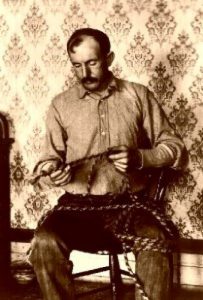 this being after he killed two area ranchers and scared the rest of the rustlers out of the area. In mid July, 1901, William Nickell, the 14 year old son of a sheep rancher, was ambushed and killed in the Iron Mountain region, allegedly due to a case of mistaken identity, as the bullet was meant for his father. About a week later, the boy’s father, Kels Nickell, was shot in the arm and hip during another ambush. U.S. Deputy Marshal Joe LeFors suspected Horn’s involvement. LeFors, wanting to gain a confession out of Horn, pretended to be in need of someone to take on a rustler clean up job in Montana. During this famous interview, Horn admitted to the Nickell’s shootings, not knowing that there was a court reporter hiding and taking notes. Ultimately, the interview would be his undoing. Although Horn alleged at his trial that he was drunk during the interview, he was found guilty on October 23, 1902, with the Wyoming State Supreme Court denying him a new trial. He was sentenced to hang, which was carried out in Cheyenne, Wyoming on November 20, 1903.
this being after he killed two area ranchers and scared the rest of the rustlers out of the area. In mid July, 1901, William Nickell, the 14 year old son of a sheep rancher, was ambushed and killed in the Iron Mountain region, allegedly due to a case of mistaken identity, as the bullet was meant for his father. About a week later, the boy’s father, Kels Nickell, was shot in the arm and hip during another ambush. U.S. Deputy Marshal Joe LeFors suspected Horn’s involvement. LeFors, wanting to gain a confession out of Horn, pretended to be in need of someone to take on a rustler clean up job in Montana. During this famous interview, Horn admitted to the Nickell’s shootings, not knowing that there was a court reporter hiding and taking notes. Ultimately, the interview would be his undoing. Although Horn alleged at his trial that he was drunk during the interview, he was found guilty on October 23, 1902, with the Wyoming State Supreme Court denying him a new trial. He was sentenced to hang, which was carried out in Cheyenne, Wyoming on November 20, 1903.

